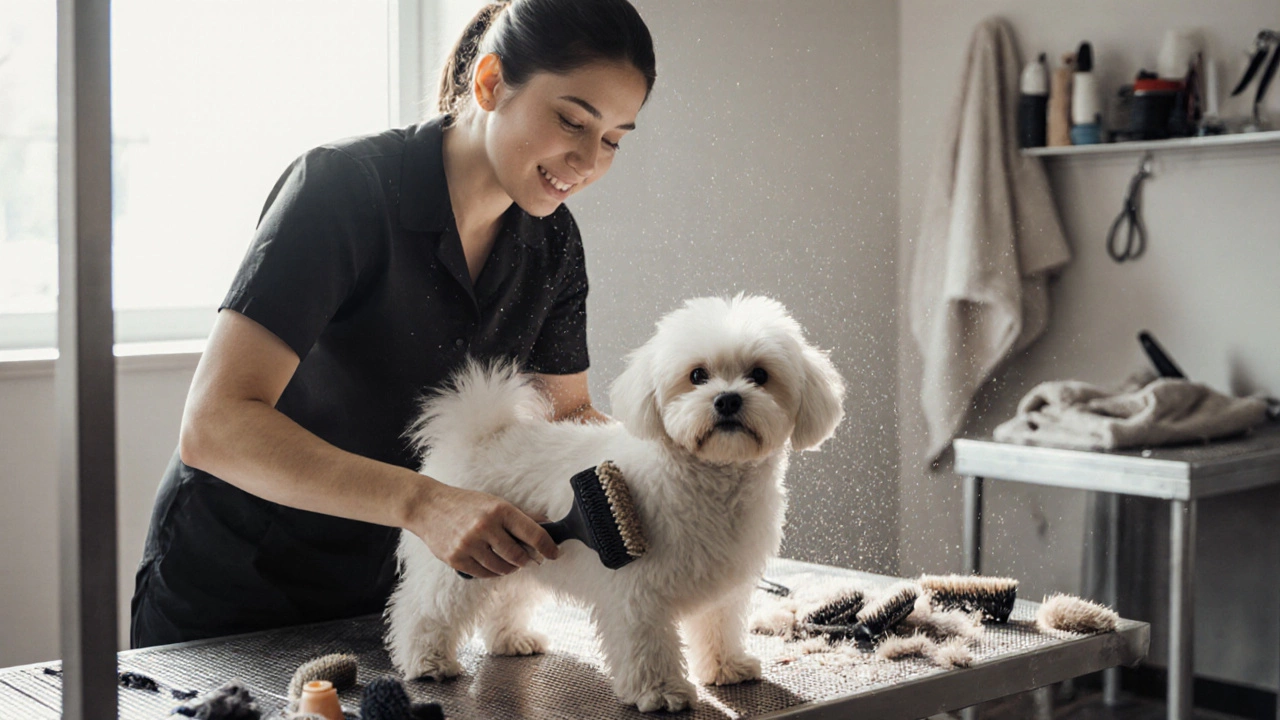Dog Coat Care: Essential Tips for a Healthy, Shiny Coat
When it comes to your dog’s dog coat care, the daily maintenance that keeps a dog’s fur healthy, shiny, and free from mats or skin issues. Also known as dog grooming, it’s not just about looks—it’s a direct window into your dog’s overall health. A dull, flaky coat or constant scratching isn’t normal. It’s your dog telling you something’s off—maybe diet, allergies, or just not enough brushing.
Good dog coat care, the daily maintenance that keeps a dog’s fur healthy, shiny, and free from mats or skin issues. Also known as dog grooming, it’s not just about looks—it’s a direct window into your dog’s overall health. isn’t about fancy shampoos or expensive brushes. It’s about consistency. Brushing your dog 2–3 times a week removes loose hair, spreads natural oils, and lets you catch hot spots or lumps early. Dogs with thick double coats, like Huskies or Golden Retrievers, need more frequent brushing, especially during shedding season. But even short-haired breeds like Beagles or Boxers benefit from a quick rubdown with a rubber grooming glove. Skin problems often start as dryness or redness under the fur, and you won’t see them unless you feel it.
What your dog eats plays a huge role too. dog coat nutrition, the balance of fatty acids, proteins, and vitamins that directly impact fur quality and skin condition. Also known as dog skin health, it’s something many owners overlook until the coat starts falling out in clumps. Omega-3 and omega-6 fatty acids are non-negotiable. Fish oil, flaxseed, or even high-quality dog food with these built in can turn a brittle, dry coat into one that shines. But don’t just dump supplements in—talk to your vet. Too much fat can lead to weight gain or pancreatitis, something vets warn about in coconut oil for dogs discussions. And if your dog is shedding more than usual, it’s not always seasonal. Stress, parasites, or thyroid issues can trigger it.
And then there’s bathing. Too often, owners think more baths mean cleaner dogs. But bathing too much strips natural oils, leading to dry, itchy skin. Most dogs only need a bath every 6–8 weeks unless they roll in something smelly. Use a dog-specific shampoo—human shampoos are too harsh. And always dry your dog fully, especially in cold weather. Wet fur under a thick coat can lead to fungal infections or hot spots.
What you’ll find in these posts isn’t theory. It’s real advice from owners and vets who’ve dealt with shedding chaos, itchy skin, and coat disasters. You’ll learn how to tell if your dog’s coat problems are harmless or serious, which brushes actually work for different coat types, and what foods make the biggest difference. No fluff. No marketing buzzwords. Just what helps—and what doesn’t.
Posted By Bryndle Redding On 16 Nov 2025 Comments (0)
Why Does It Take 3 to 4 Hours to Groom a Dog?
Dog grooming takes 3 to 4 hours because it's not just a haircut-it's a full health check. From de-matting and drying to ear cleaning and nail trimming, every step ensures your dog's comfort and safety.
READ MORE